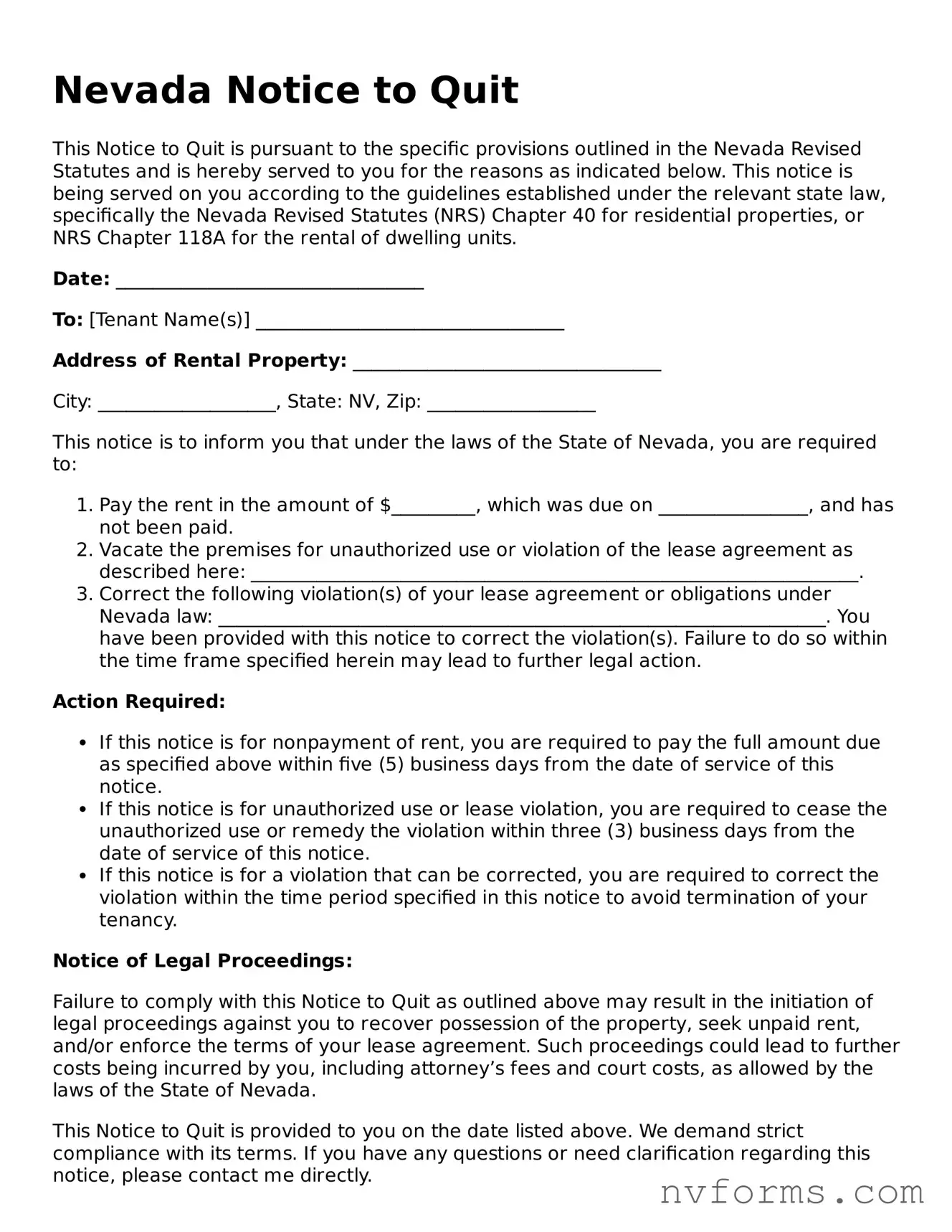Nevada Notice to Quit
This Notice to Quit is pursuant to the specific provisions outlined in the Nevada Revised Statutes and is hereby served to you for the reasons as indicated below. This notice is being served on you according to the guidelines established under the relevant state law, specifically the Nevada Revised Statutes (NRS) Chapter 40 for residential properties, or NRS Chapter 118A for the rental of dwelling units.
Date: _________________________________
To: [Tenant Name(s)] _________________________________
Address of Rental Property: _________________________________
City: ___________________, State: NV, Zip: __________________
This notice is to inform you that under the laws of the State of Nevada, you are required to:
Options for the notice reason
- Pay the rent in the amount of $_________, which was due on ________________, and has not been paid.
- Vacate the premises for unauthorized use or violation of the lease agreement as described here: _________________________________________________________________.
- Correct the following violation(s) of your lease agreement or obligations under Nevada law: _________________________________________________________________. You have been provided with this notice to correct the violation(s). Failure to do so within the time frame specified herein may lead to further legal action.
Action Required:
Action required based on the type of notice
- If this notice is for nonpayment of rent, you are required to pay the full amount due as specified above within five (5) business days from the date of service of this notice.
- If this notice is for unauthorized use or lease violation, you are required to cease the unauthorized use or remedy the violation within three (3) business days from the date of service of this notice.
- If this notice is for a violation that can be corrected, you are required to correct the violation within the time period specified in this notice to avoid termination of your tenancy.
Notice of Legal Proceedings:
Failure to comply with this Notice to Quit as outlined above may result in the initiation of legal proceedings against you to recover possession of the property, seek unpaid rent, and/or enforce the terms of your lease agreement. Such proceedings could lead to further costs being incurred by you, including attorney’s fees and court costs, as allowed by the laws of the State of Nevada.
This Notice to Quit is provided to you on the date listed above. We demand strict compliance with its terms. If you have any questions or need clarification regarding this notice, please contact me directly.
Landlord (or Authorized Agent) Name: ______________________________________
Contact Information: Phone: __________________, Email: _______________________
Signature: ______________________________________ Date: _____________________
This document is intended as a tool to assist in the process of managing the landlord-tenant relationship and is not intended as legal advice. For specific legal concerns or situations, consulting with a qualified attorney who understands Nevada's property and tenant laws is recommended.
